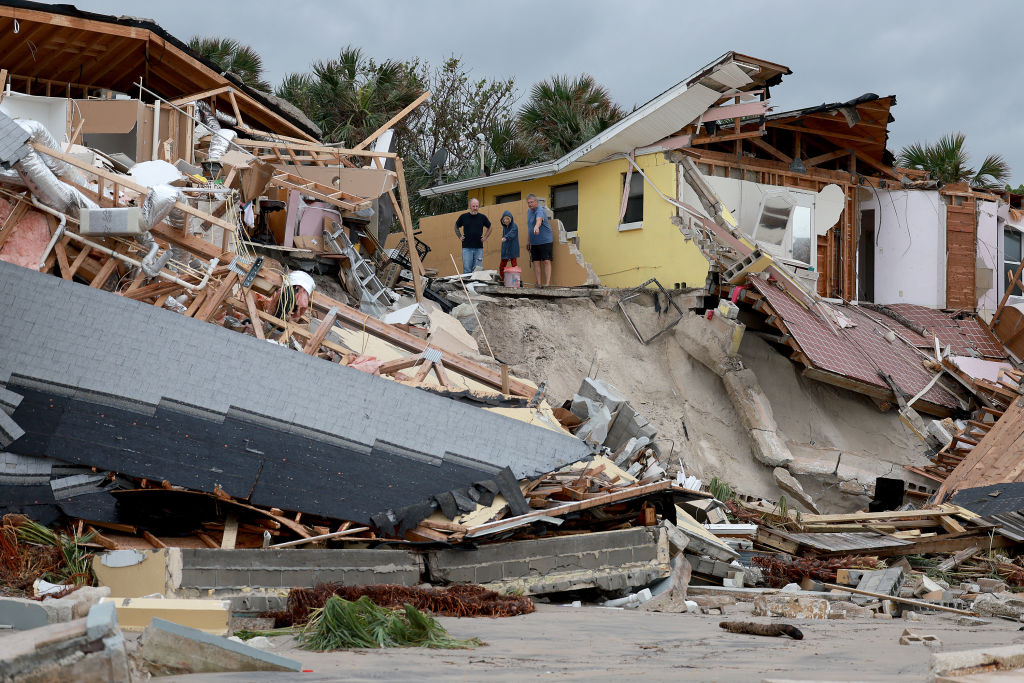Two is not better than one, when it comes to hurricane strikes.
In the case of Florida, the one-two punch of Hurricanes Ian and Nicole dealt a deadly, damaging, and serious economic blow to the state from which it will take years to recover.
The 2022 Atlantic hurricane season, which officially ends Wednesday, will be remembered for its slow start and furious finish. The lopsided season did not see its first hurricane until September.
HURRICANE SEASON
The Hurricane season is on. Our meteorologists are ready. Sign up for the NBC 6 Weather newsletter to get the latest forecast in your inbox.
Once it got going, though, some of 2022’s storms — supercharged by the climate crisis — broke meteorological records.
Danielle, for example, the season’s first storm to reach hurricane force, didn’t develop in the tropics. It formed in the normally colder North Atlantic, halfway between Virginia and Portugal! Less than a handful of tropical systems have attained hurricane strength farther northeast of where Danielle did. Sea surface temperatures were at record-hot levels in that part of the ocean, topping 80 degrees (°F).
Later in September, Hurricane Fiona started off as a more conventional storm, developing off of an African easterly wave as it meandered into the Caribbean. Fiona hit Puerto Rico and the Dominican Republic, causing widespread power outages as well as deadly flash flooding and mudslides.
Instead of losing strength as it turned north into the usually colder waters of the northern Atlantic, Fiona fed off of the abnormally warm ocean to become a major Category 4 hurricane.
Even as it barreled towards Canada’s Maritime Provinces, it maintained its tropical characteristics up until a day before landfall in Nova Scotia. The storm produced a record storm surge and set the new mark for the lowest barometric pressure ever recorded in Canada at 934 millibars or 27.58 inches of mercury.
Just as Fiona was making landfall, Tropical Storm Ian was forming in the Caribbean Sea.
Forecasters warned that conditions for rapid intensification were ideal, and Ian quickly revved up into a major hurricane before striking Pinar del Rio province in Cuba, where it caused significant damage.
A little over 24 hours later, Ian struck Southwest Florida as a large Category 4 monster, with a wall of water up to 15 feet tall that killed well over one hundred people. Ian also inundated inland parts of the state with up to 2 feet of rain and major river flooding.
Once it's all added up, a new Florida disaster damage record of just under $100 billion will be set by Major Hurricane Ian — likely at least 40% costlier than Hurricanes Andrew and Irma respectively.
To add insult to injury, late-season Hurricane Nicole struck Florida on November 9. It was the first hurricane to make landfall on the east coast of Florida since Katrina in 2005, and only the second hurricane on record (dating back to 1851) to strike the Sunshine State in the month of November!
Despite being a low-end Category 1 hurricane, Nicole’s storm surge wreaked havoc along the northeast coast of the state, where many coastal homes and businesses were taken by the sea.
Overall, the 2022 Atlantic season tallied 14 tropical storms of which 8 reached hurricane status, 2 of those becoming major hurricanes (Fiona and Ian). Eleven of the 14 storms formed in the second half of the askew season.
What will 2023 bring? It’s too soon to tell. But if recent history is any indication, we need to be ready for more surprises.
For now, enjoy the offseason! I look forward to serving you again in the coming years.
John Morales is NBC 6's hurricane specialist.



